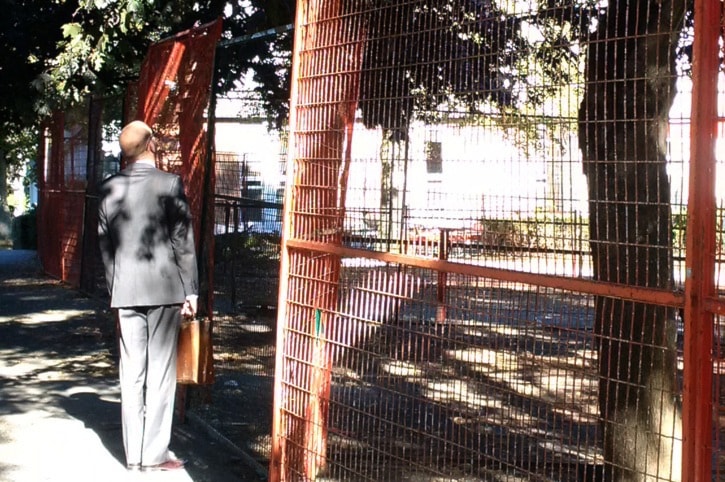VictoriaB┤╬ď¬╣┘═°═°ÍĚÖs infamous B┤╬ď¬╣┘═°═°ÍĚťtent cityB┤╬ď¬╣┘═°═°ÍĚŁ has been evacuated, as others have before it around B.C., with more than the usual ongoing public pain and expense.
The showers, toilets and privacy fencing have been hauled away after serving through spring and summer of the 10-month occupation of Crown land beside the downtown courthouse. Mayor Lisa Helps said she wasnB┤╬ď¬╣┘═°═°ÍĚÖt around there much, but her main regret was that these services hadnB┤╬ď¬╣┘═°═°ÍĚÖt been provided sooner, although feces and needles continued to litter the area after they were installed.

As the campersB┤╬ď¬╣┘═°═°ÍĚÖ daily quarrels subsided, a couple of parting gifts were left for the neighbourhood. A pulse of rats spread out from large nests that had formed under the stolen or donated lumber that had covered most of the filthy lot.
What used to be a pretty little park is now a bare wasteland, dead or dying ornamental trees and shrubs removed, topsoil scraped away and the remaining large trees monitored behind steel fencing to see if they will survive.
The self-styled housing activists who bused in protesters to the site returned to Metro Vancouver, setting up a similarly media-handy squat in the Downtown Eastside and occupying a condemned apartment block in Burnaby. As they offered the usual Marxist remedies via banners and bullhorns, a long-running street-side drug camp in North Surrey also came to the attention of the Vancouver media.
It is assumed by many that the flood of campers is locally grown, although most of the specific evidence I see is to the contrary: drifters from less welcoming parts of B.C. as well as Alberta, Saskatchewan and Quebec that I have been able to identify.
They are assumed to suffer from B┤╬ď¬╣┘═°═°ÍĚťmental health and addictions,B┤╬ď¬╣┘═°═°ÍĚŁ as B.C. housing czar Rich Coleman habitually describes the condition. The province plans to provide residence and treatment for about 200 people at the former Riverview Hospital in Coquitlam, although half of that project will replace existing adult and youth facilities in Burnaby.
Victoria, by my count, now has around 800 existing or planned B┤╬ď¬╣┘═°═°ÍĚťtransitional housingB┤╬ď¬╣┘═°═°ÍĚŁ or shelter units. So many buzzwords are used itB┤╬ď¬╣┘═°═°ÍĚÖs difficult to establish categories, but most of the hundreds of new rooms appear to be modern equivalents of the B┤╬ď¬╣┘═°═°ÍĚťsingle-room occupancyB┤╬ď¬╣┘═°═°ÍĚŁ slums of the Downtown Eastside B┤╬ď¬╣┘═°═°ÍĚô containment rather than treatment for this alleged epidemic of B┤╬ď¬╣┘═°═°ÍĚťmental health.B┤╬ď¬╣┘═°═°ÍĚŁ
My summer reading included an unusually frank discussion of this world-wide cultural problem, written by British psychiatrist Theodore Dalrymple. Life at the Bottom: The Worldview that Makes the Underclass was published in 2001 and chronicles his experience working in a hospital and prison that serve the rougher part of London. It stands up well today and seems to have anticipated the urban subculture we now see in Canada.
He quotes a still-popular Pink Floyd song to describe the culture that has replaced the discipline of family, religion and work among the lower classes. B┤╬ď¬╣┘═°═°ÍĚťWe donB┤╬ď¬╣┘═°═°ÍĚÖt need no education/We donB┤╬ď¬╣┘═°═°ÍĚÖt need no thought controlB┤╬ď¬╣┘═°═°ÍĚŁ is now read as a sort of gospel.
Street drugs are the preferred method of escaping the supposed thought control of orderly society. Getting a tattoo of oneB┤╬ď¬╣┘═°═°ÍĚÖs girlfriendB┤╬ď¬╣┘═°═°ÍĚÖs name is a preliminary step to abandoning her and their shared child. The so-called sexual revolution led not only to a rise in neglected children, but also an escalation of abuse of poor women that he has to treat.
Dalrymple reserves a special scorn for the mass media obsession with injustice in the most just society ever created, and the notion that poverty causes crime.
IB┤╬ď¬╣┘═°═°ÍĚÖll discuss that in a future column.
Tom Fletcher is B.C. legislature reporter and columnist for Black Press. Email: tfletcher@blackpress.ca Twitter:



